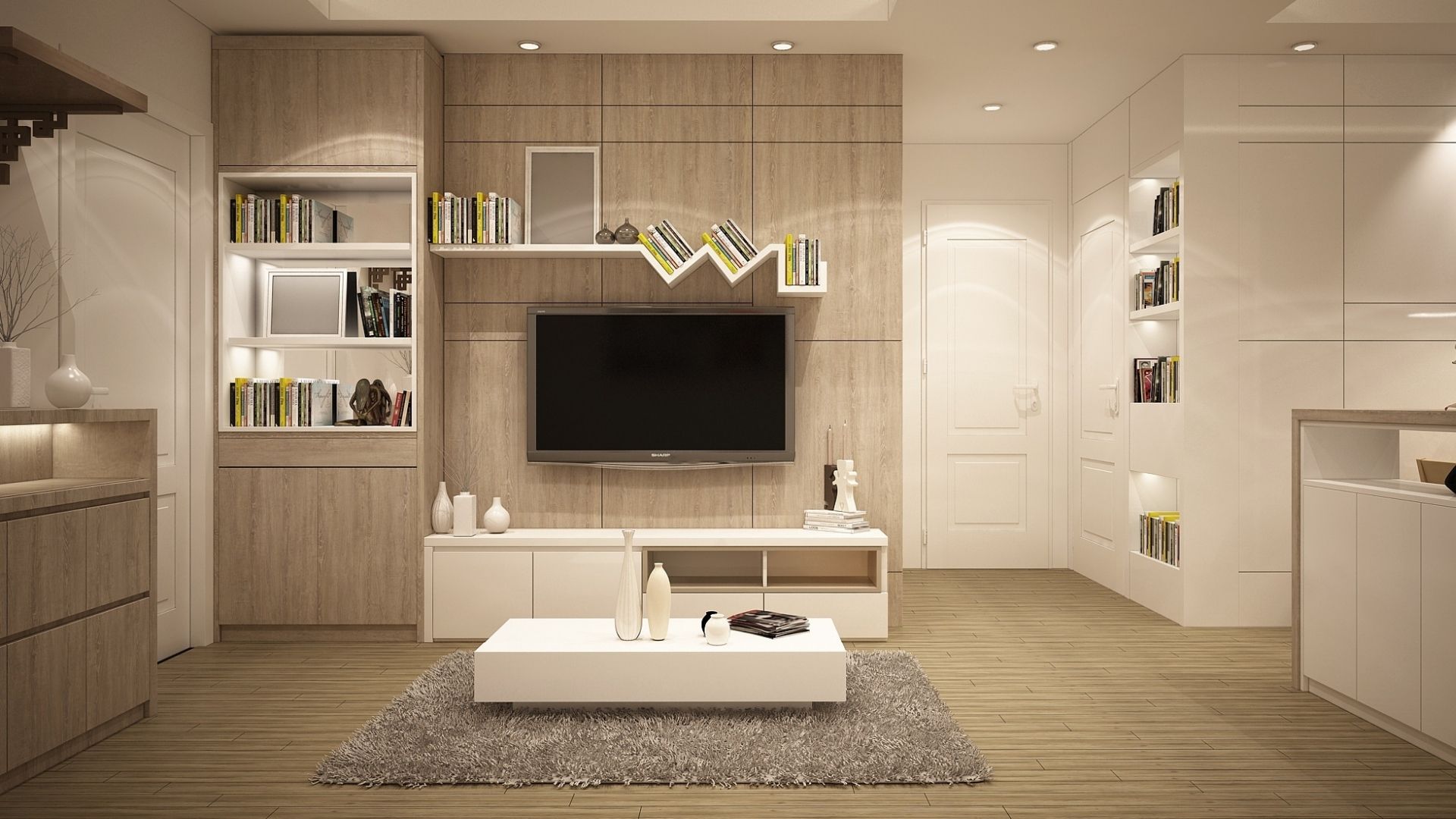When it comes to choosing a surface material for your home decor project, two popular options are laminate and veneer. While they may seem similar at first glance, there are important differences to consider before making a final decision. In this blog post, we will explore the differences between laminate and veneer, their advantages and disadvantages, and how to choose the best material for your decor. We will also provide some tips on how to incorporate each material into your home decor.
Laminate and veneer have been popular choices in the interior and furniture industry for a long time. Laminate sheets are typically pasted onto a substrate like MDF or particleboard using heat and pressure, creating a durable and easy-to-clean surface. Laminate is a synthetic material that mimics the look of real wood, stone, or metal and comes in a variety of colors and patterns. Veneer, on the other hand, is a thin layer of real wood that is glued onto materials like MDF or particleboard to create a high-end look. While both options are cost-effective and stylish, they have their own unique characteristics that make them stand out. Whether you’re a fan of bold and colorful designs or prefer the timeless elegance of natural wood, there’s a material out there that’s perfect for you! It’s worth noting that laminates are often a more affordable option than veneers, making them a popular choice for budget-conscious consumers.
What We'll Cover
ToggleWhat is Laminate?

Laminate is a synthetic material made of multiple layers of resin and paper or fabric. The layers are fused together using heat and pressure to create a durable and water-resistant surface. Laminate is commonly used for countertops, cabinets, and flooring because it is easy to clean, resists stains and scratches, and comes in a wide range of colors and patterns.
One of the advantages of laminate is its affordability. It is generally less expensive than other materials like natural stone or hardwood. Additionally, laminate is low maintenance and can be easily cleaned with a damp cloth or mild detergent.
Decor Tip: Laminate can be a great option for modern or minimalist decor styles. Choose a solid color or simple pattern to create a clean and sleek look. For example, a white or black laminate countertop can add a touch of sophistication to a contemporary kitchen.
Types of Laminates
High-Pressure Laminates (HPL)
Durable, scratch-resistant, wide range of colors and patterns.
Low-Pressure Laminates (LPL)
Affordable, easy to install, and available in various designs and finishes.
Compact Laminates
Durable, impact-resistant, and suitable for high-moisture environments.
Backer Laminates
Provides additional support and stability.
Post-Forming Laminates
designed for bending and shaping around curved surfaces.
Specialty Laminates
- Fire-retardant Laminates.
- Chemical-resistant Laminates.
- Anti-bacterial Laminates.
What is Veneer?

Veneer is a thin layer of natural wood that is attached to a substrate, typically made of particleboard or medium-density fiberboard (MDF). Veneer is often used to create the appearance of hardwood without the high cost. It can be stained and finished to match the look of a specific wood species and is commonly used for furniture, cabinetry, and decorative wall panels.
One of the advantages of veneer is its natural beauty. It can add warmth and texture to a space and is often considered a more high-end material than laminate. Veneer is also environmentally friendly, as it uses less wood than solid wood products.
Decor Tip: Veneer is a great option for creating a cozy and rustic decor style. Use it to add texture and depth to walls, or incorporate it into furniture pieces like a coffee table or bookshelf. Choose a warm wood tone, like oak or maple, to create a cozy and inviting atmosphere
Types of Veneers
Rotary Cut Veneer
Wild grain pattern, popular for decorative use.
Flat Cut Veneer
Straight grain pattern with occasional cathedrals and arches.
Quarter Cut Veneer
Straight grain pattern with distinctive flecking effect.
Rift Cut Veneer
Straight grain pattern with a consistent, linear appearance.
Reconstituted Veneer
Made by slicing and dyeing fast-growing species of wood, available in a wide range of colors and patterns.
Laid-Up Veneer
Created by gluing together multiple layers of veneer for furniture, cabinets, and wall panels.
Differences between Laminate and Veneer
While laminate and veneer have some similarities, there are several key differences to consider when choosing between the two materials.
Durability: Laminate vs Veneer

Laminate is generally more durable than veneer, as it is less prone to scratching and chipping. It is also more water-resistant than veneer, which can be damaged by exposure to moisture. However, laminate is not as heat-resistant as natural stone or ceramic tile, and can be damaged by hot pots or pans.
Aesthetics: Laminate vs Veneer

Veneer is often considered more visually appealing than laminate, as it has a natural wood grain and texture. It can be stained and finished to match the look of a specific wood species and can add warmth and character to a space. Laminate, on the other hand, can have a uniform and artificial appearance, although it does come in a wide range of colors and patterns.
Maintenance: Laminate vs Veneers

Laminate is generally lower maintenance than veneer, as it is easy to clean and resists stains and scratches. Veneer requires more care, as it can be susceptible to moisture and may need to be resealed periodically. It is also more prone to scratches and dents than laminate.
Cost-effectiveness- Laminates vs Veneers

Veneer and laminate in India are like two sides of a coin – one made of natural wood and the other of synthetic materials. Veneer is the high-end option, like a luxury car that demands attention and a hefty price tag. Laminate, on the other hand, is a budget-friendly alternative, like a reliable economy car that gets the job done without draining your wallet. So, whether you’re looking for a statement piece or a practical solution, choose the option that aligns with your style and budget, and drive (or renovate) with confidence!
Sustainability – Laminates vs Veneers

When it comes to sustainability, choosing between laminates and veneers can feel like a difficult decision. But fear not, eco-conscious readers, because both options have their own unique green benefits. Laminates, for instance, are often made from recycled materials and can withstand heavy use – perfect for the sustainability-minded busybody. On the other hand, veneers are often sourced from responsibly managed forests and are an efficient use of materials, making them a great choice for those who love to reduce waste. So, whether you’re a laminate lover or a veneer devotee, know that both options can offer eco-friendly solutions for your design needs. After all, sustainable style is always in season!
Laminates vs Veneers: A Head-to-Head Comparison for Flooring, Furniture, Wall Panels, and Cabinets
Laminates and veneers are two popular materials used in various applications such as flooring, furniture, wall panels, and cabinets. Here is a comparative study of laminates and veneers in each of these areas:
Flooring
Laminate Flooring

Laminates are a great choice for flooring due to their affordability, durability, and ease of maintenance. They can mimic the look of natural materials such as wood, stone, and tile.
Veneer Flooring

In contrast, veneer flooring offers a natural wood look with a durable finish, providing a warm and inviting atmosphere. However, veneer flooring is typically more expensive than laminate flooring.
Furniture
Laminated Furniture

Laminates are commonly used in furniture due to their affordability, durability, and ease of maintenance. They can mimic the look of real wood or other materials and are available in a variety of colors and patterns.
Veneer Furniture

Veneer is often used in furniture because of its natural wood grain and texture, providing a high-end look for furniture at a fraction of the cost of solid wood.
Wall Panels
Laminated Wall Panels

Laminates can be used in wall panels to add texture and visual interest to a space. They can mimic the look of natural materials such as wood, stone, and tile.
Veneer wall panels

On the other hand, veneer can be used to create a natural, organic look for any wall, offering a unique natural look and feel that cannot be replicated by synthetic materials like laminate.
Cabinets
Laminated Cabinets

Laminates are often used in cabinets due to their durability and ease of maintenance, making them ideal for kitchen and bathroom cabinets. They can mimic the look of real wood or other materials and are available in a variety of colors and patterns.
Veneer Cabinets

Veneer is often used in cabinets because of its natural wood grain and texture, providing a high-end look for cabinets at a fraction of the cost of solid wood.
Summing it up: Laminates vs Veneer
To conclude, both laminate and veneer have their unique advantages and disadvantages when it comes to furniture and interior design. Laminate is a synthetic material that provides excellent durability and scratch resistance, making it ideal for high-traffic areas or areas with high moisture content. It is also versatile in design, as it comes in a variety of colors and patterns that can imitate the look of natural wood or stone.
When choosing between laminate and veneer, it is important to consider the specific application and personal preferences. Laminate may be the better option for those seeking a low-maintenance, durable material, while veneer may be more suitable for those who value the natural beauty of wood and are willing to take extra care to maintain its appearance. Ultimately, both materials can provide excellent results when used appropriately in the right situations.
FAQs
Laminates are thin sheets made from layers of resin-impregnated paper or other materials. They are applied to surfaces such as furniture, cabinets, or countertops to provide a decorative and protective layer.
Veneers are thin slices of wood, typically around 1/16 to 1/8 inch thick, that are applied to surfaces to enhance their appearance. Veneers can be made from various types of wood and are commonly used for furniture, cabinetry, and wall paneling.
The main difference lies in their composition and application. Laminates are synthetic materials, while veneers are made from real wood. Laminates are usually applied using adhesive, while veneers are typically glued or bonded directly to the surface.
Laminates are generally considered more durable and resistant to scratches, stains, and moisture compared to veneers. They are designed to withstand daily wear and tear, making them suitable for high-traffic areas. Veneers, being made of real wood, can be more prone to scratches and damage.





